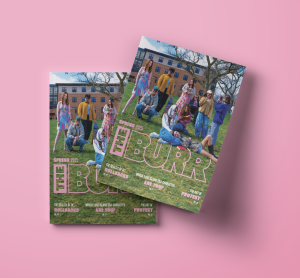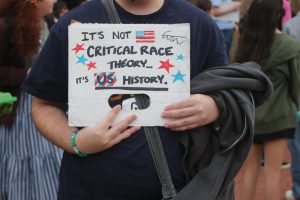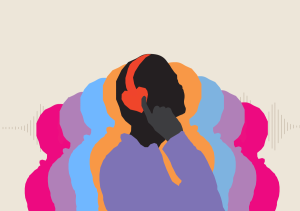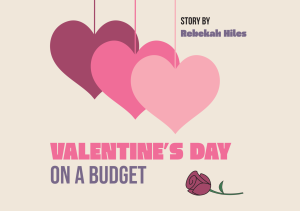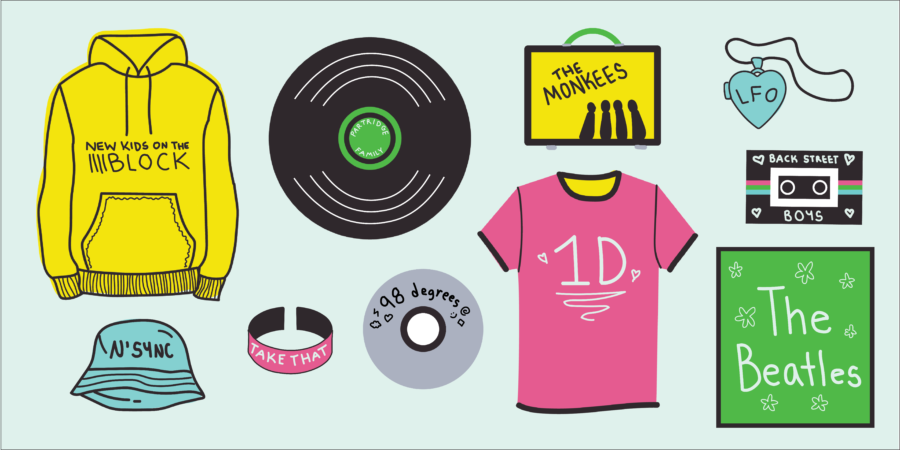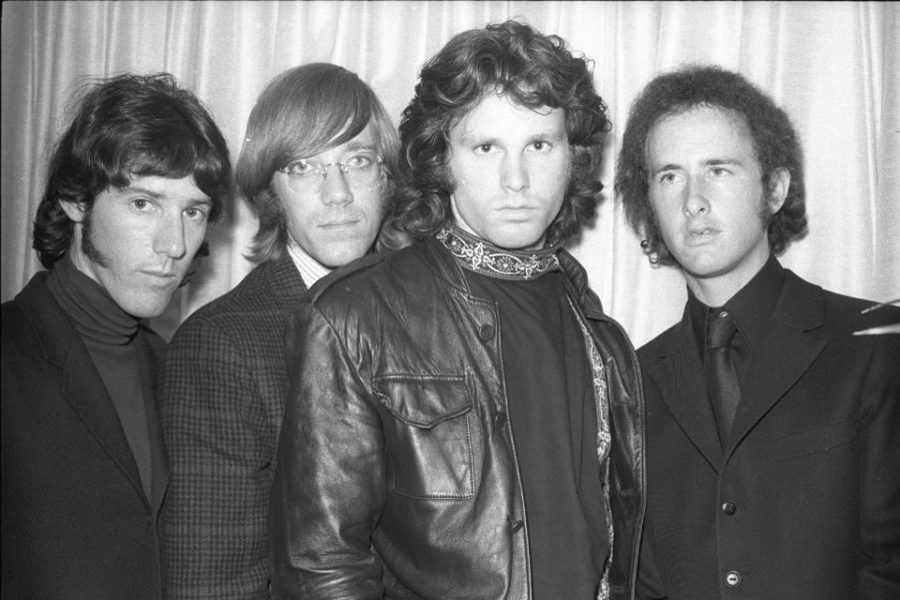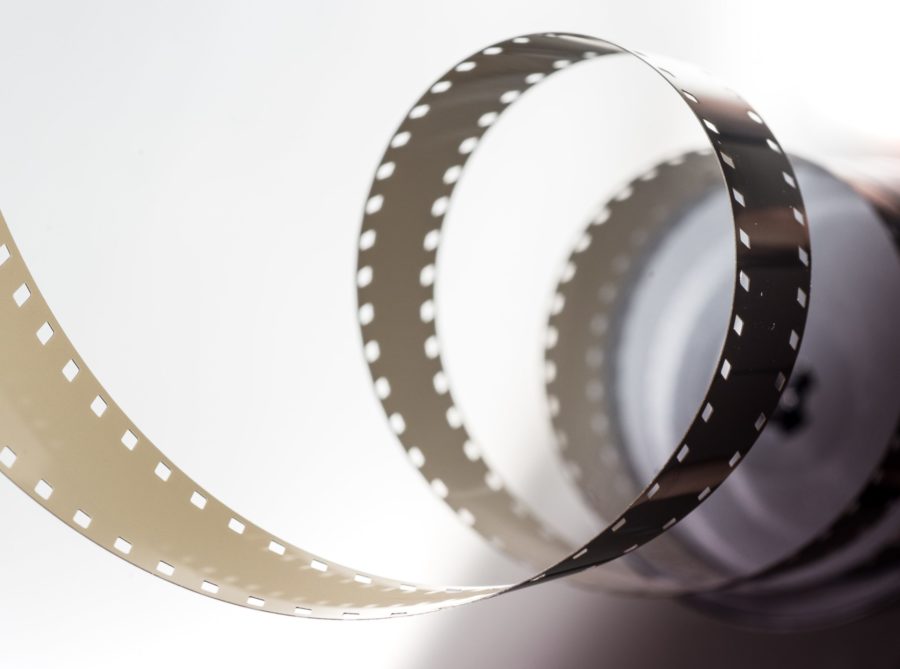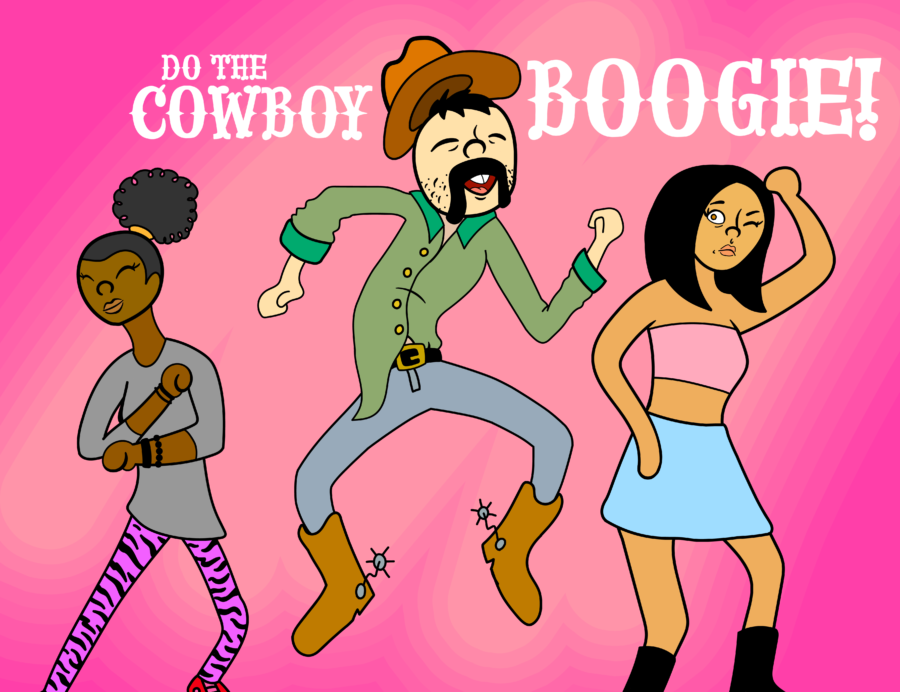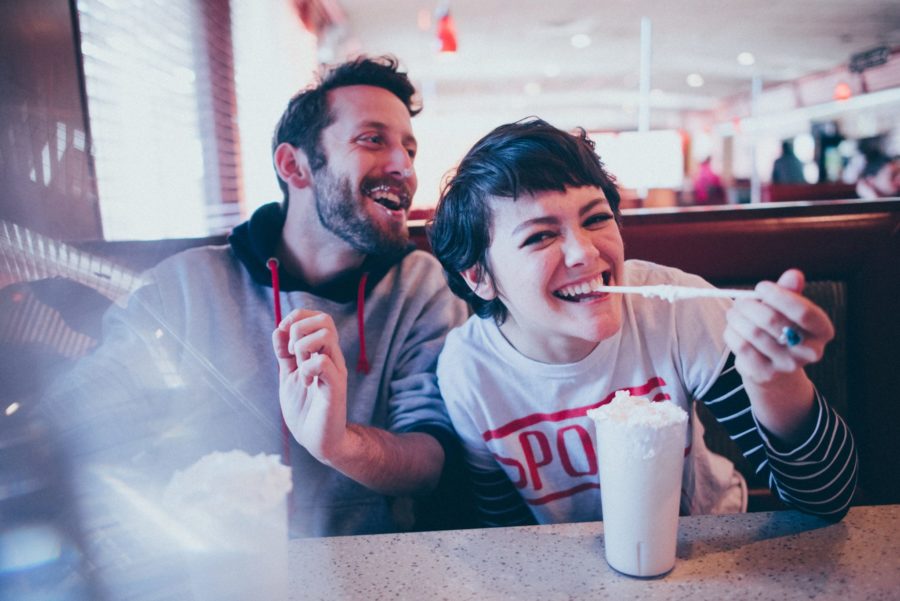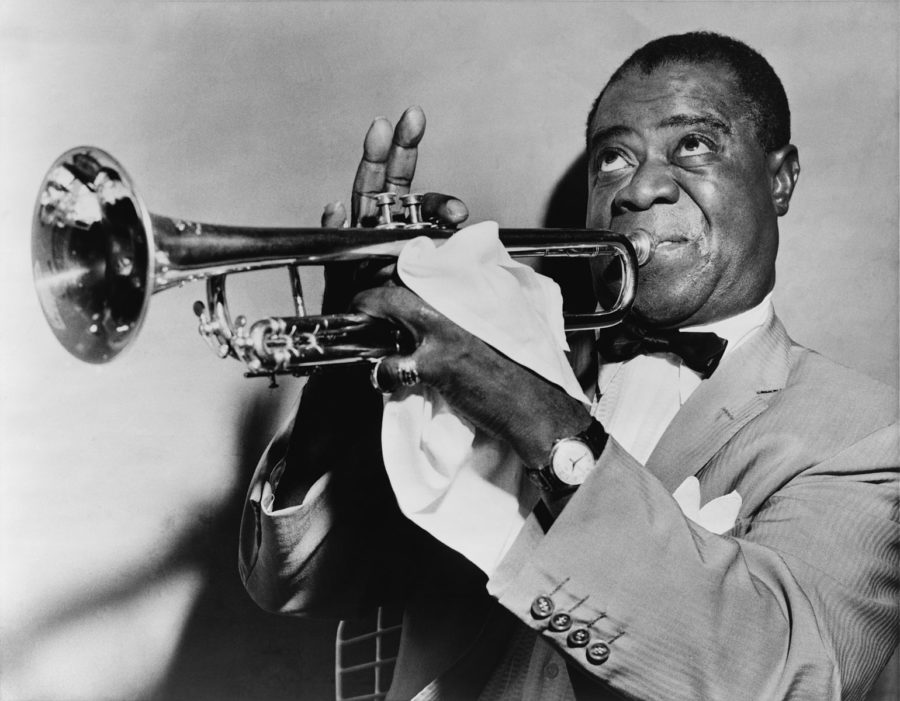Illustration by Dominica Hoover
The boy band has been a staple of defining an era, just as much as slang or regrettable fashion trends. Often, these groups are put together by a batch of industry producers to perform songs mainly targeted at young women. Like most material aimed at teenage girls, boy bands are generally criticized as being too maudlin, repetitive and demeaning. They’re often the butt of cultural jokes as well, much like the Twilight series in the late 2000s or E-girls and Billie Eilish now. Whether these are sexist double standards or valid critiques (which they very well can be at times), boy bands frequently get the cultural iron strike. As a fan of several groups who could be classified in this subgroup, which I know should be an embarrassing thing to admit, I feel I should defend these boy bands whose music I genuinely enjoy.
Like most modern music, boy bands arguably started with the Beatles. While teen idols were only a recent phenomenon (Elvis, Ricky Nelson and others had only come along a few years prior), The Beatles created the cultural ideal of a boy band: cute, fashionable young men who are musically talented as well as cheeky and relatable to young people. Every girl had a favorite Beatle. Girls and boys would hound their landing planes, surround their cars and form crowds outside of their hotel rooms. The Beatles also said in later interviews that they found it difficult to hear themselves play due to the screaming from the audience. However, most music historians won’t classify The Beatles as a boy band since they were organically formed and wrote a majority of their music, which matured and became more eccentric as their career progressed. But one creative endeavor they embarked on would influence the first manufactured boy band.
Inspired by the early Elvis films from the late ‘50s, United Artists collaborated with The Beatles to produce the film “A Hard Day’s Night.” (I suggest you watch it, it’s actually so good. It’s even in the criterion collection.) It was conceived as a way for fans to peek into the daily lives of their idols and promote new music they had made exclusively for the film. Two television producers saw the film and came up with an idea for a television show for NBC, thus creating the very first “boy band,” The Monkees.
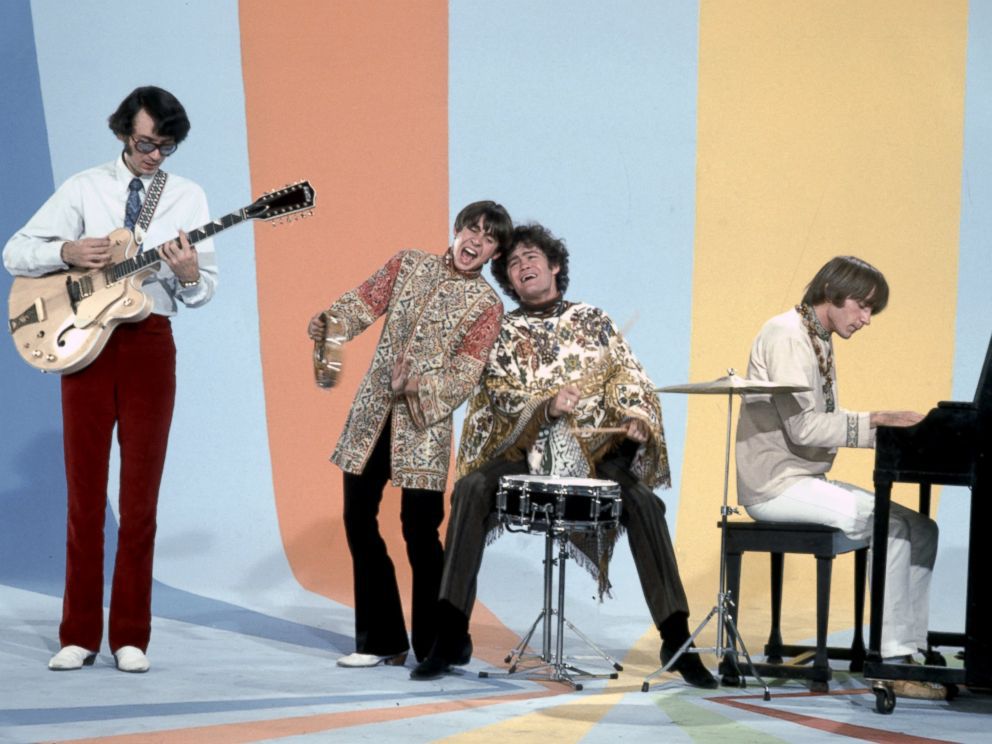
Even now, The Monkees get a lot of flack from music critics and the general public. Yes, they didn’t play their own instruments, and they didn’t write most of their music. I don’t think, however, that those facts should be attached to opinions and critiques of the music itself. Having studio musicians and songwriters were common trends in that era. The Monkees, regardless, still produced some great pop music that was funneled into their television show that inspired the later music video medium. Most importantly, they were also another band of cute young men who were marketed to teenage girls. Due to that, they were often compared with The Beatles, with The Monkees being labeled as the less talented of the two. The Monkees, however, had songs written by legendary songwriters like Carole King, Gerry Goffin, Neil Diamond, Harry Nielson and the band’s own Michael Nesmith, just to name a few. Some of their later albums even contained songs from Paul Williams, “Someday Man” being my favorite. They also eventually became more experimental in the later ’60s like their British elders, but with even more oddball flourishes mixed in with a classic pop sensibility. The Monkees even have a movie as well, “Head,” which is a fever dream acid trip rolled into an hour and a half (that I also highly recommend). The soundtrack for “Head” has my personal favorite song, “As We Go Along,” which is a simple little ditty that has so much power.
The Monkees proved that this boy band model combined with a television show could be a success, and television producers ran with this model in the ‘70s, the most popular being “The Partridge Family” on ABC, starring feather-haired icon David Cassidy, whom I am married to in my brain at all times. Led by Cassidy, who has a shockingly deep and powerful voice, the music of the show was similar to that of later Monkees records, with horns and a creamy, easy-listening harmony. It’s quite tame and sort of repetitive, but it’s nevertheless a good relic of the early ‘70s conservative pop that followed the late ‘60s. The one song I’d recommend the most is “Summer Days” from ‘71, both for the sharp organ and the matching white polyester vests. Another band I’d like to briefly mention is Scottish plaid legends Bay City Rollers. They didn’t have a television show, but they did frequent the British charts show “Top of the Pops” in the mid to late ‘70s with their bouncy, hefty pop tunes. They even inspired the Ramones with their classic “Saturday Night.”
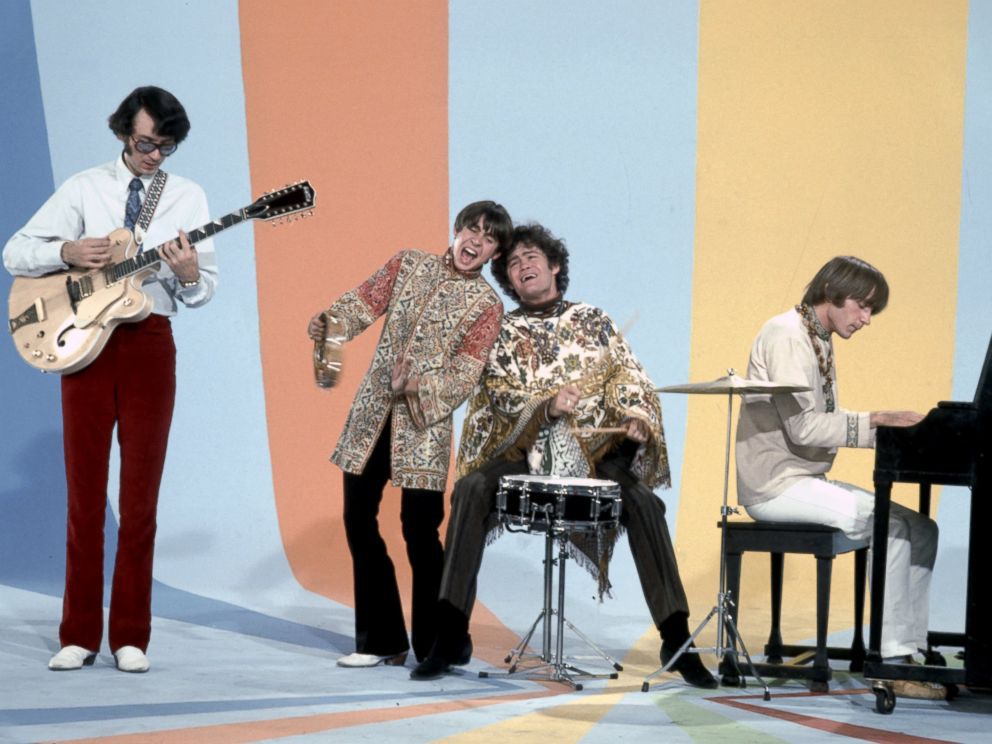
In the ‘80s, everything was enormous. This includes the colossal band New Edition. New Edition, founded by the same manager of New Kids, had a unique sound but one that is reflective of the era. Their first two albums were glittery, funky and bright, in sound and in outfits. They were more R&B than any bands that came before, experimenting with weighty drum machines and electronic rubber rhythms similar to Zapp and Roger. They also introduced a new characteristic that would become essential to the boy band image, dance moves. Their songs are a tad cheesy from a modern perspective, but “Cool it Now” and “Candy Girl” are two selections of pure pop magic to jump in with. Bobby Brown, arguably the leader of the band, also was a huge teen idol, taking the image of the bad boy from his days in New Edition to his successful solo career in the later ‘80s.
The ‘90s were the decade of the boy band, no questions asked. The later part of the decade featured a battle between the Lou Pearlman sound machines, Backstreet Boys and *NSYNC. I’m personally on the side of *NSYNC, as they formed as a doo-wop group (which is hilarious), but their music just appeals to my specific senses more than Backstreet. Also, the *NSYNC members seemed to be more attainable than the middle-parted chiseled Backstreet men. I mean, look at these swishy fits and frosted tips. The *NSYNC sound seemed to be more aggressive as well, apart from “This I Promise You,” with electronic harmonies opening up most of their songs, followed by the intense drum machines that showed through in the dance routines, both live and in videos. “I Want You Back,” I Drive Myself Crazy,” and “Tearing up My Heart” are clear examples of the musical phenomenon and silly visuals. The boys of *NSYNC also experienced similar encounters to The Beatles, with screaming fans around every corner, dozens of products peddled at fans and hysterics at concerts.
We arguably didn’t have another culture-defining boy band until 2011, when One Direction burst onto the music scene, rattled the shores of America and became heartthrobs for legions of teenage girls, including myself. One Direction had a different arc than the other bands mentioned previously, since they came to public fame in a social media age, allowing fans to have more personal interaction with the members, sometimes in creepy ways. But One Direction had a more empowering message within some of their songs, without any shortage of the staple of break-up anthems. They also were all about spreading positivity, supporting LGBT fans and promoting several charitable foundations. It also helped that the music was fantastic, which matured as their career progressed.“Four” is my personal favorite of their albums, switching from power pop to folksier material in a clean but mature fashion. “Night Changes,” “Fireproof” and “Steal My Girl” are the first three I’d recommend to any new folks.
One Direction fans also wear their fandom like a badge of honor, while older fans of boy bands might hide their CDs and donate their merchandise once they reach college-age. I think this is a positive change with how we, the consumers, treat the media we consume. Some of these boy bands have performed genuinely good pop music, and that should be acknowledged. Writing about and discussing this music most people are embarrassed to admit they enjoy, we can have more confidence in talking about music. I mean, why take yourself so seriously anyway?

